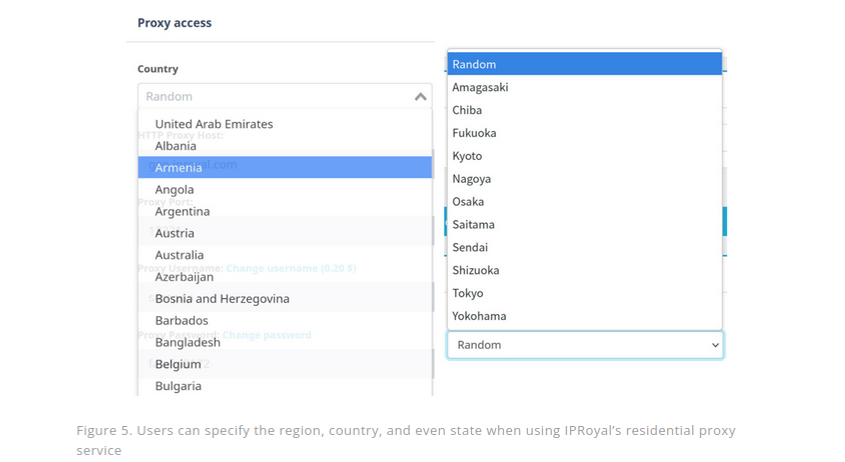
Harmony in Tech: How ITIL Compliance Streamlines Modern IT Ecosystems
In an era where technology permeates every facet of our lives, from smartphones in our pockets to cloud-based software powering businesses, achieving harmony in the ever-evolving IT landscape is paramount. This harmonious state, where technology seamlessly aligns with business goals and customer needs, can be achieved through ITIL (Information Technology Infrastructure Library) compliance. In this article, we delve into how ITIL compliance plays a pivotal role in streamlining modern IT ecosystems, ensuring they function like well-orchestrated symphonies.
The Shifting Sands of Technology
To understand the significance of ITIL compliance, we must first acknowledge the dynamic nature of technology. Today’s IT landscape is constantly evolving, with new tools, platforms, and paradigms emerging at a staggering pace. Cloud computing, artificial intelligence, the Internet of Things (IoT), and cybersecurity threats are just a few examples of the myriad forces shaping the tech world.
These constant shifts can create a chaotic and disjointed IT environment, where different components, systems, and teams operate in silos, hindering efficiency and effectiveness. This is where ITIL compliance steps in as the conductor of the IT orchestra, bringing order and coherence to the cacophony of technology.
What is ITIL?
ITIL is a set of best practices and guidelines for managing IT services. It provides a comprehensive framework for aligning IT activities with the needs of the business, ensuring that technology functions as an enabler rather than a bottleneck. ITIL was developed by the UK government in the 1980s and has since evolved into a globally recognized standard for IT service management.
The core principles of ITIL include:
- Service Strategy: Aligning IT services with business objectives and customer needs.
- Service Design: Designing efficient and scalable IT services.
- Service Transition: Managing the introduction of new services and changes to existing ones.
- Service Operation: Ensuring the day-to-day operation of IT services is smooth and effective.
- Continual Service Improvement: Continuously improving IT services and processes.
The Symphony of ITIL Compliance
Imagine ITIL compliance as the sheet music for an orchestra. Each section (or IT service) has its part to play, but they must all follow the same score to create beautiful music together. Here’s how ITIL compliance orchestrates the various elements of a modern IT ecosystem:
- Enhanced Communication
One of the primary benefits of ITIL compliance is improved communication. In an IT ecosystem, different teams often work on separate aspects of technology – development, operations, security, and more. ITIL breaks down the barriers between these silos by promoting communication and collaboration.
For example, when an organization follows ITIL practices, it establishes clear channels for communication between development and operations teams. This collaboration results in faster problem resolution, smoother deployments, and ultimately, a better experience for both internal and external customers.
- Efficient Resource Management
Resource management is a critical aspect of IT operations. ITIL helps organizations optimize resource allocation by providing a structured approach to capacity planning, financial management, and asset management. This ensures that IT resources are used efficiently, reducing wastage and cost overruns.
By implementing ITIL’s principles, organizations can make informed decisions about resource allocation, scaling services up or down as needed, and ensuring that budgets are allocated where they will have the most significant impact on business objectives.
- Customer-Centric Approach
In today’s tech-savvy world, customers have high expectations. They demand seamless experiences, prompt issue resolution, and services that cater to their unique needs. ITIL’s customer-centric approach ensures that IT services are designed, delivered, and maintained with the customer in mind.
Through techniques like service level agreements (SLAs) and customer feedback mechanisms, ITIL compliance ensures that IT services continually evolve to meet customer expectations. This not only enhances customer satisfaction but also drives business growth and competitive advantage.
- Risk Mitigation
Cybersecurity threats, data breaches, and system failures are constant concerns in the digital age. ITIL includes robust risk management practices to mitigate these threats effectively. It helps organizations identify vulnerabilities, establish controls, and create disaster recovery plans to ensure business continuity in the face of unexpected events.
By proactively managing risks, ITIL compliance minimizes the potential for costly disruptions and safeguards an organization’s reputation.
- Continuous Improvement
The tech world never stands still, and neither should IT services. ITIL’s emphasis on continual service improvement ensures that organizations are always seeking ways to enhance their IT services and processes. This culture of ongoing refinement drives innovation and helps organizations stay competitive in a rapidly evolving market.
By regularly reviewing and optimizing IT services, businesses can identify opportunities for automation, cost reduction, and performance enhancement, keeping them at the forefront of technological advancement.
Real-World Success Stories
To illustrate the tangible benefits of ITIL compliance, let’s explore a couple of real-world success stories.
Netflix
The streaming giant Netflix relies heavily on ITIL principles to manage its vast and complex IT ecosystem. By implementing ITIL’s service design and service operation practices, Netflix has achieved remarkable scalability, ensuring that its millions of users can stream content seamlessly.
Netflix’s customer-centric approach to ITIL has also allowed it to tailor its recommendations and user interfaces to individual preferences, enhancing the user experience and keeping subscribers engaged.
NASA
Even in the realm of space exploration, ITIL plays a crucial role. NASA’s Jet Propulsion Laboratory (JPL) uses ITIL principles to manage its IT services. This includes everything from mission-critical systems for Mars rovers to data centers supporting satellite missions.
By adhering to ITIL best practices, JPL has been able to ensure the reliability and efficiency of its IT services, enabling the successful execution of numerous space missions.
Overcoming Challenges
While ITIL compliance offers numerous advantages, it’s not without its challenges. Implementing ITIL practices requires a significant commitment of time and resources. Organizations may face resistance to change, particularly from employees accustomed to existing processes.
However, the long-term benefits far outweigh the initial hurdles. Successful ITIL implementation often requires executive buy-in, employee training, and a gradual transition to the new framework to minimize disruption.
Conclusion
In the ever-evolving world of technology, achieving harmony within an IT ecosystem is essential. ITIL compliance serves as the conductor, bringing order to the chaos and ensuring that technology aligns with business objectives and customer needs.
By promoting communication, efficient resource management, a customer-centric approach, risk mitigation, and a culture of continuous improvement, ITIL compliance streamlines modern IT ecosystems, making them more resilient, adaptable, and capable of delivering outstanding results.
As we continue to navigate the digital age, ITIL remains a beacon of best practices, guiding organizations towards a harmonious and successful future in technology. Whether you’re a streaming giant like Netflix or exploring the cosmos like NASA, ITIL compliance offers the sheet music to create a symphony of success in the world of IT.
Contact Cyber Defense Advisors to see how we can tailor our ITIL compliance services to your needs.





